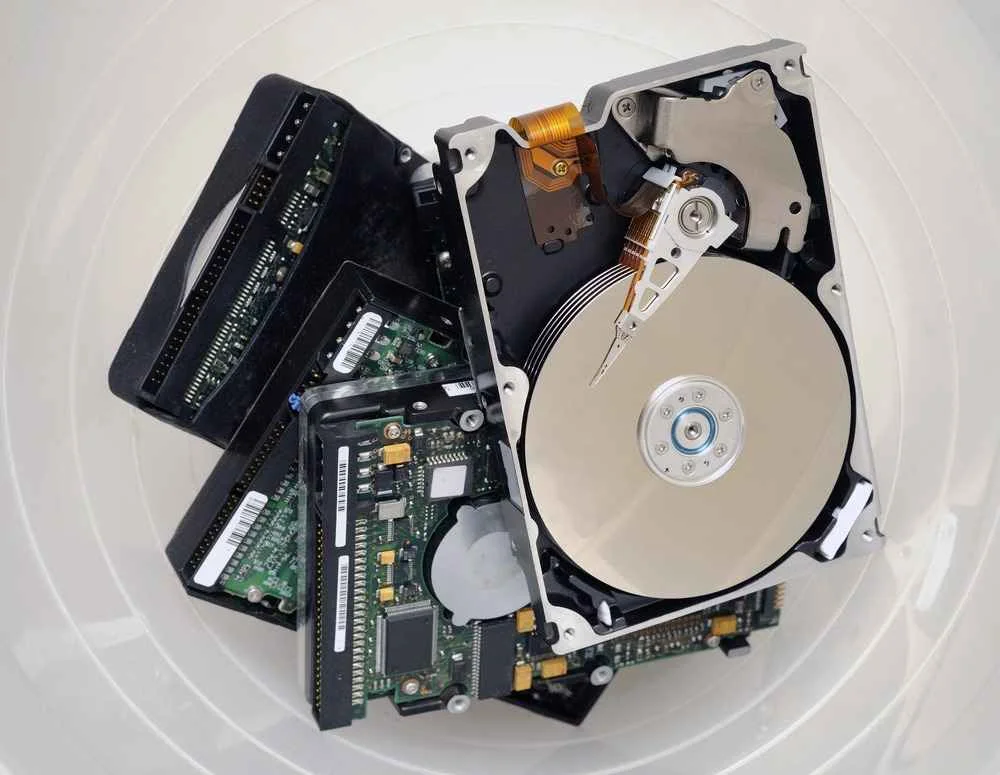Introduction
Hard Drive Data Destruction where data breaches are all too common, ensuring your sensitive information doesn’t fall into the wrong hands is critical. Whether you’re a small business owner or a large corporation, data security is non-negotiable. One of the most essential strategies? Hard drive data destruction.
Gone are the days when simply deleting files was enough. Hackers and data thieves have sophisticated tools that can recover deleted data in minutes. That’s why understanding and applying secure data disposal methods is the key to ultimate data protection.
This article explores everything you need to know about hard drive data destruction, from proven techniques to legal compliance and environmental impacts. Let’s dive in!
Understanding Hard Drive Data Destruction
Definition and Significance
Hard drive data destruction is the process of permanently erasing or destroying the data stored on a hard drive, making it irretrievable. This is essential when decommissioning old devices, transferring equipment, or closing down departments.
Why does this matter? Because one mishandled drive can lead to catastrophic data breaches, identity theft, and non-compliance with data protection laws.
Common Misconceptions
Many people believe that formatting a drive or deleting files is enough. In reality, these methods only erase the file directory, not the actual data. The data still lingers and can be recovered unless proper data destruction methods are used.
Methods of Hard Drive Data Destruction
Physical Destruction Techniques
Physical destruction is one of the most reliable and foolproof ways to ensure data is gone for good. This includes shredding, crushing, and drilling methods that destroy the platter, rendering it unreadable.
Software-Based Data Wiping
Data wiping involves overwriting the hard drive’s contents with random patterns using data wiping software. It’s effective for repurposing or selling devices without compromising data security.
Degaussing
Degaussing hard drives means using a powerful magnetic field to disrupt the magnetic domains on the drive platters, which completely erases all data. It’s a strong option for high-security environments
Physical Destruction Techniques
Shredding
Hard drive shredding breaks the device into tiny pieces, ensuring that data cannot be reconstructed. This is the go-to method for government and military agencies.
Crushing
Crushing applies force to bend or break the hard drive’s internal components, rendering it unreadable. It’s fast and ideal for on-site destruction.
Drilling
Drilling holes through the drive platter can physically damage the storage medium. However, it may not destroy all data, so it’s best used with another method.
Software-Based Data Wiping
Overview of Data Wiping Software
There are many tools designed for secure data disposal methods, including DBAN (Darik’s Boot and Nuke), Blancco, and Eraser. These programs overwrite data multiple times, complying with industry standards.
Effectiveness and Limitations
While data wiping is effective, it’s not suitable for physically damaged drives or SSDs. Additionally, it can be time-consuming, especially for large storage volumes.
Degaussing: Magnetic Data Erasure
How Degaussing Works
A degausser emits a strong magnetic pulse that disrupts the data on the drive. It’s instantaneous and highly effective but it also renders the hard drive unusable afterward.
Applicability to Different Storage Media
Degaussing works well on magnetic drives (HDDs) but is not effective on solid-state drives (SSDs) or flash storage.
Compliance and Legal Considerations
Regulations like GDPR and HIPAA
Failure to properly destroy data can lead to massive fines under regulations like GDPR and HIPAA. These laws mandate data destruction compliance regulations that ensure personal data is irretrievably erased.
Industry Standards for Data Destruction
Organisations should follow standards like NIST 800-88 or ISO/IEC 27040, which outline procedures for secure media sanitisation and data security best practices.
Choosing the Right Data Destruction Method
Factors to Consider
- Type of data stored
- Storage device used
- Required compliance standards
- Environmental impact
Pros and Cons of Each Method
| Method | Pros | Cons |
| Shredding | Very secure and fast | Irreversible, requires equipment |
| Data Wiping | Reusable devices, low cost | Time-consuming, not for SSDs |
| Degaussing | Instant, highly secure | Destroys the drive |
DIY vs. Professional Data Destruction Services
When to Opt for Professional Services
Professional data destruction ensures compliance, uses certified methods, and provides documentation. It’s ideal for businesses handling large volumes of sensitive data.
Risks of DIY Data Destruction
DIY methods might seem cost-effective but often lack efficiency and compliance, increasing the risk of data recovery and breaches.
Best Practices for Data Destruction
Establishing Data Destruction Policies
Every organization should have a clear, written policy for handling obsolete devices. This includes timelines, responsibilities, and approved destruction methods.
Documentation and Verification
Always keep a record of destroyed devices, including serial numbers, the destruction method used, and verification certificates.
Tools and Software for Data Wiping
Popular Data Wiping Tools
- DBAN
- Blancco
- KillDisk
- Eraser
Features to Look For in Data Destruction Software
- Multi-pass overwriting
- Certification support
- Reporting and audit logs
- Compatibility with different OS
Environmental Considerations
Eco-Friendly Disposal of Destroyed Hard Drives
Once data is destroyed, drives should be sent to certified e-waste recycling centers. Avoid sending electronics to landfills where toxic components harm the environment.
Recycling and E-Waste Management
Look for R2 or e-Stewards certified recyclers who follow ethical practices in disposing of electronic waste.
Case Studies: Data Breaches Due to Improper Disposal
Real-World Examples
- A healthcare provider faced a $1.5M fine after disposing of hard drives without erasing patient data.
- A financial firm suffered reputation damage due to customer data found on discarded drives.
Lessons Learned
Improper disposal leads to loss of trust, fines, and legal consequences. Always verify complete data destruction.
Future Trends in Data Destruction
Emerging Technologies
- AI-based data destruction monitoring
- Biodegradable storage devices
- Blockchain-based data destruction verification
Predictions for Data Security
As cyber threats evolve, physical and software-based destruction will merge, offering layered protection methods that ensure total security.
FAQs on Hard Drive Data Destruction
1. What is the most secure method of hard drive data destruction?
Hard drive shredding combined with degaussing offers the highest level of security.
2. Is data-wiping software reliable?
Yes, if certified and used correctly. For highly sensitive data, combine it with physical methods.
3. How do I ensure compliance with data destruction regulations?
Follow industry standards like NIST 800-88 and retain documentation for audits.
4. Can I destroy a hard drive at home?
Yes, but professional services ensure legal compliance and thorough destruction.
5. Is e-waste recycling mandatory?
In many regions, yes. It’s also essential for environmental responsibility.
6. What happens if I don’t destroy my data properly?
You risk data breaches, legal fines, and severe damage to your reputation.


